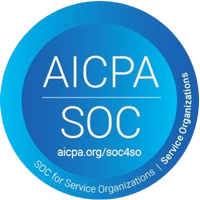Are you constantly juggling overtime requests that quickly cut into your budget? Do you find yourself having to replace employees who quit, frustrated with their schedules? You might have a problem with your employee scheduling system.
Poor shift management can lead to unhappy workers, costly overtime, and increasing agency usage. In addition, if employees don’t have enough opportunities for input, they could wind up with schedules that cut into their personal lives—which can eventually lead to turnover.
What could be done to bridge the gaps in communication and allow healthcare organizations to efficiently manage their shifts?
In this article we’ll explore the hidden costs of poor shift management, and how scheduling software can help you save money and streamline your workforce management. Let’s dive into the hidden costs of a poor scheduling system.
7 Ways Your Poor Shift Management Strategy Costs You
1. Wasted Time
One of the most common costs of a poor scheduling system is wasted time.
Manual scheduling (which refers to traditional, labor-intensive processes like creating schedules on paper) are riddled with complexities and prone to human errors. Managers spend countless hours creating schedules, addressing last-minute changes, shift swaps, and unforeseen absences. This wasted time not only affects your employees but also translates into tangible financial losses for your organization.
With manual scheduling, your team is so mired in shift management that they don’t have time to work on other crucial tasks. You may even need to expand your management team to account for this wasted time.
2. Overstaffing
Overstaffing is another common consequence of poor shift management. It often happens when administrator’s are scrambling to fill open shifts, and end up scheduling more overtime and agency workers than necessary.
When more employees are scheduled than needed, you’re essentially paying for labor that doesn’t contribute to revenue generation. Overstaffing can happen even if you’re understaffed for certain shifts.
Are you experiencing low shift fulfillment in the beginning of the week, only to overstaff against your budget as you assign employees and agency for last minute openings? This might be a sign that your shift management system needs to change—or you’ll risk skyrocketing labor costs.
3. Understaffing
Understaffing is just as expensive as overstaffing. It results in decreased productivity and poor resident care, both of which can impact reputation and decrease the number of customers interested in using your facility.
It can also cause burnout and increased turnover, which then leads to more shift openings week over week, and a resulting scramble to fix them.
Understaffing can even lead to additional expenses like overtime pay. Overtime pay can quickly add up, not to mention that overtime can burn out your employees as they struggle to cover for empty shifts.
While shift management software can’t fix the nursing shortage, it can optimize the staff that you do have to help you fill your open shifts efficiently.
4. Overreliance on Agencies
Poor shift management can make it challenging to fill open shifts. When your shift management system is precarious, a last minute cancellation by a sick employee can throw your whole schedule into disarray.
Healthcare facilities may rely on external agencies to quickly provide replacement staff. This overreliance on agency workers can be exorbitantly expensive, and lead to rapid depletion of budget.
5. More Administrative Mistakes
When you’re managing shifts manually or with outdated software, it’s easy to make mistakes. The complexities of scheduling, including labor laws, employee availability, skill levels, and more, can overwhelm even the most diligent managers.
These mistakes not only increase the risk of overstaffing and understaffing but can also lead to costly compliance issues, such as failing to preserve staff’s break time.
6. Unnecessary Overtime
If shift schedules are not planned effectively, there may be insufficient staff on duty to handle patient needs or workload demands.
This shortage can result in staff being asked to work overtime to bridge the gap. But overtime is expensive for you and often exhausting for workers. It can often be avoided if the staff on hand are allocated properly.
Unnecessary overtime not only inflates your labor costs but can also lead to employee burnout and decreased morale. This means that employees are at higher risk of leaving your company, resulting in high replacement costs as you hire and train new candidates.
7. Decreased Employee Satisfaction and Retention
Employee satisfaction and retention are critical for the success of any organization. When employees have more control over their schedules, they’re more likely to stay with your company.
Satisfied employees tend to be more engaged and productive, further benefiting your bottom line. Conversely, dissatisfied employees are disconnected from their jobs and more likely to leave the company, leading to increased recruitment and training costs.
Shift Management Software Can Help
Shift management software is a technological solution designed to streamline the scheduling process. This software automates the creation and management of employee schedules, taking into account various factors like employee availability, skills, labor laws, and historical data.
Key Software Features to Help You Save
Several key software features can help your organization save money and improve efficiency:
- Automated Scheduling. Automated scheduling refers to a software platform’s ability to create employee schedules automatically, predicting and communicating the correct number of open shifts based on your labor plans. This reduces the risk of costly errors, expensive overstaffing, and stress-inducing understaffing.
- Overstaffing Notifications. A strong scheduling platform should alert schedulers and managers when shifts are being overstaffed. This feature can save more than $280 per shift, and, in facilities with high overstaffing, tens of thousands of dollars monthly.
- Employee Self-Service Options. Employee self-service and shift bidding options empower staff to have more control over their schedules. They can request time off, swap shifts, and set their availability. This helps you reduce the administrative burden on managers, freeing their time up for hiring or other management tasks. It also reduces turnover by creating a sense of work-life balance.
- Real-Time Data and Reporting. Scheduling software provides real-time data and reporting capabilities. Managers can track labor costs, overtime, and compliance with labor laws in real-time, making it easier to make informed decisions. With real-time reporting, managers can make staffing decisions that save them money.
- Integration Capabilities. Many scheduling software solutions offer integration capabilities, allowing them to seamlessly integrate with other tools and systems your organization uses, such as payroll or HR software. Instead of paying for each service individually, you can save money by paying for solutions as a package.
Tips for Saving Money With Scheduling Software
To maximize the cost-saving benefits of scheduling software, consider the following tips:
- Optimize Break and Rest Periods. Use scheduling software to optimize break and rest periods. Ensure that employees are taking breaks in accordance with labor laws while minimizing disruptions to workflow. This will prevent you from getting hit with expensive compliance fees, as well as reduce turnover—employees who are rested and have good work-life balance are less likely to leave the organization.
- Stay Up-to-Date on New Software Features. Keep your team informed about the latest features and updates in scheduling software. New features can often provide more efficient ways to schedule staff and save on labor costs.
- Analyze Cost Savings Regularly. Regularly analyze the cost savings and efficiency improvements achieved through scheduling software. This ongoing evaluation can help you identify areas for further optimization and cost reduction.
Shift Management With Apploi Schedule
Ready to take your shift management to the next level? Consider using Apploi Schedule for your scheduling needs. With our user-friendly and feature-rich software, you can streamline your scheduling process, reduce labor costs, and improve employee satisfaction. Schedule a demo today.
 Skip to main content
Skip to main content



